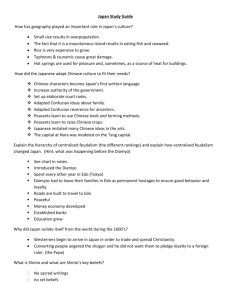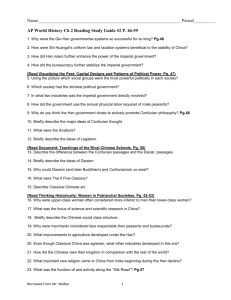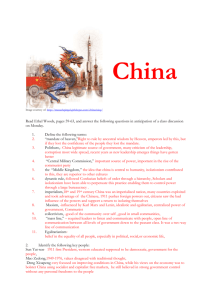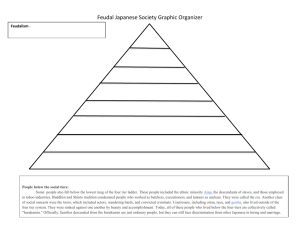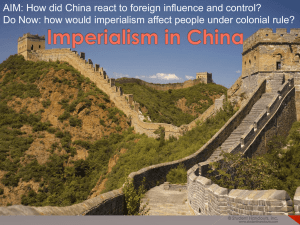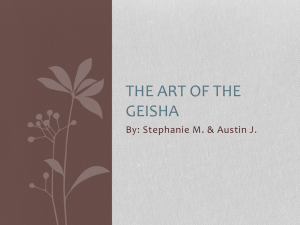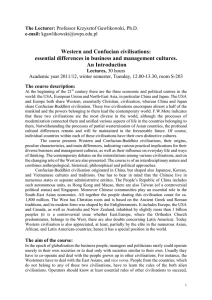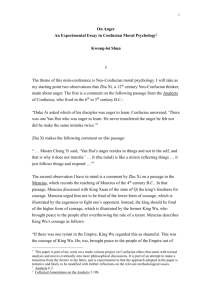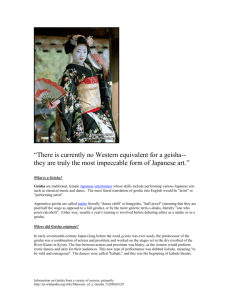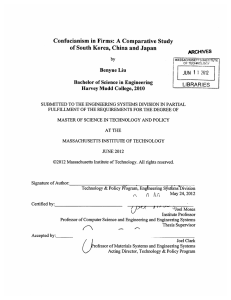Brochure Text - Kansas Humanities Council
advertisement
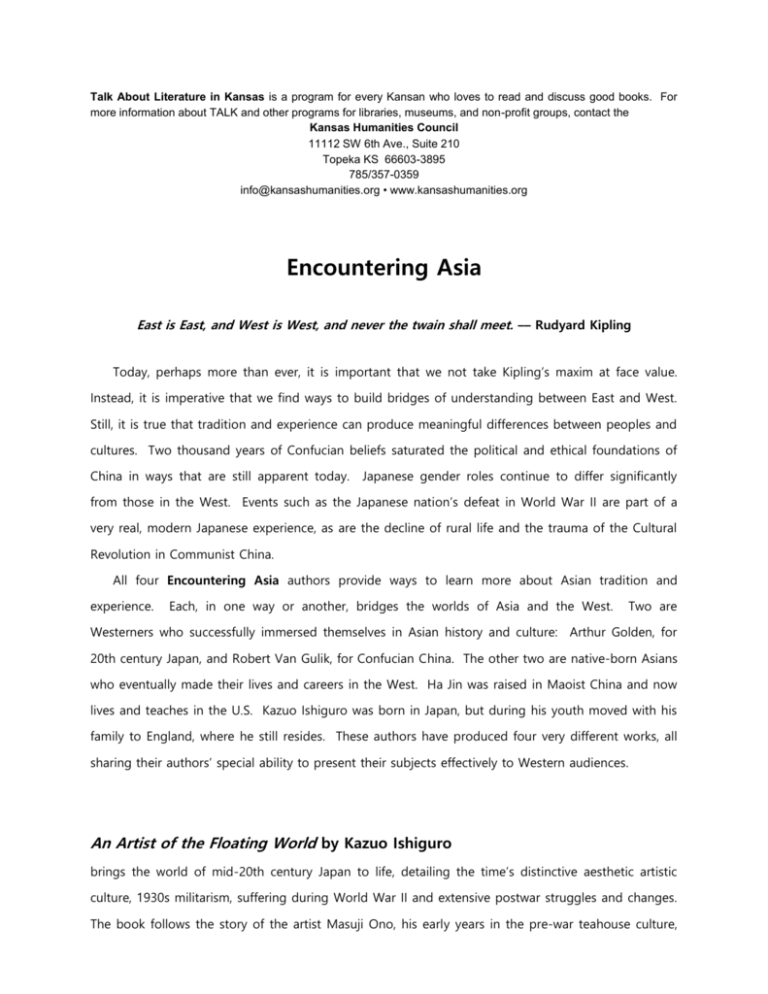
Talk About Literature in Kansas is a program for every Kansan who loves to read and discuss good books. For more information about TALK and other programs for libraries, museums, and non-profit groups, contact the Kansas Humanities Council 11112 SW 6th Ave., Suite 210 Topeka KS 66603-3895 785/357-0359 info@kansashumanities.org • www.kansashumanities.org Encountering Asia East is East, and West is West, and never the twain shall meet. –– Rudyard Kipling Today, perhaps more than ever, it is important that we not take Kipling’s maxim at face value. Instead, it is imperative that we find ways to build bridges of understanding between East and West. Still, it is true that tradition and experience can produce meaningful differences between peoples and cultures. Two thousand years of Confucian beliefs saturated the political and ethical foundations of China in ways that are still apparent today. Japanese gender roles continue to differ significantly from those in the West. Events such as the Japanese nation’s defeat in World War II are part of a very real, modern Japanese experience, as are the decline of rural life and the trauma of the Cultural Revolution in Communist China. All four Encountering Asia authors provide ways to learn more about Asian tradition and experience. Each, in one way or another, bridges the worlds of Asia and the West. Two are Westerners who successfully immersed themselves in Asian history and culture: Arthur Golden, for 20th century Japan, and Robert Van Gulik, for Confucian China. The other two are native-born Asians who eventually made their lives and careers in the West. Ha Jin was raised in Maoist China and now lives and teaches in the U.S. Kazuo Ishiguro was born in Japan, but during his youth moved with his family to England, where he still resides. These authors have produced four very different works, all sharing their authors’ special ability to present their subjects effectively to Western audiences. An Artist of the Floating World by Kazuo Ishiguro brings the world of mid-20th century Japan to life, detailing the time’s distinctive aesthetic artistic culture, 1930s militarism, suffering during World War II and extensive postwar struggles and changes. The book follows the story of the artist Masuji Ono, his early years in the pre-war teahouse culture, 2 his growing support of wartime militarism, and finally his postwar confrontations with that legacy and its consequences for his family. 206 pp. The Chinese Gold Murders by Robert Van Gulik is a very successful mystery novel. It’s often assigned reading in university-level Chinese History courses. Van Gulik, by profession a Dutch diplomat, was also a very respected scholar of traditional Confucian China. Through his main character, Judge Dee, Van Gulik introduces readers to a somewhat idealized but also accurate world of traditional Confucian Chinese government. His style is that of Golden Age mysteries, with upright heroes and jigsaw puzzle plots, but also memorable characters, fascinating details and important subject matter. 196 pp. Memoirs of a Geisha by Arthur Golden also deals with mid-century Japan, telling the story of Sayuri, who rose from childhood poverty, survived the rigors of early geisha training and wartime danger to become one of Japan’s most successful geishas. Golden brings alive the often-misunderstood world of what was perhaps the only important career opportunity for traditional Japanese women: mastering the very formal and demanding art of entertaining men. 428 pp. Waiting by Ha Jin provides a moving, but disturbing view of Cultural Revolution-era China and one single set of characters’ human frailties. Lin Kong is a military doctor whose duties separate him from the traditional, arranged-marriage wife who lives back in his native village. In love with Manna, an army nurse, Lin tries unsuccessfully to get his wife to agree to a divorce. Thus he is “waiting” the 18 years that by law must pass before he can get a divorce without her consent. But it turns out human nature is more complex than this, as Ha Jin’s readers come to understand. 308 pp. Suggestions for Further Reading Jung Chang, Three Swans: Three Daughters of China. The story of Chang’s own grandmother (a bound-foot concubine), mother (a fervent supporter of Communist revolution), and herself (a 3 sufferer during the Cultural Revolution). Lesley Downer, Women of the Pleasure Quarters: The Secret History of the Geisha . A serious and thoughtful history by British journalist Downer. Yasunari Kawabata, Thousand Cranes. One of post-war Japan’s most famous novels. Like Tanizaki’s Nettles, it brings alive the nostalgia, regrets and conflicts of changing Japan. Jonathan Spence, Emperor of China: Self-Portrait of K’ang-Hsi. Yale University Professor Spence uses the last Chinese dynasty’s greatest emperor’s own words to bring alive traditional Chinese government and rule. Jun’ichiro Tanizaki, Some Prefer Nettles. A classic late 1920s Japanese novel about the conflict between tradition and modernity, human choices and frailties. Jan Wong, Red China Blues: My Long March From Mao to Now. Wong, an ethnic Chinese born and raised in Canada, tells the story of her enthusiastic time in late Cultural Revolution China, her gradual disillusionment and all the changes seen in later visits.
